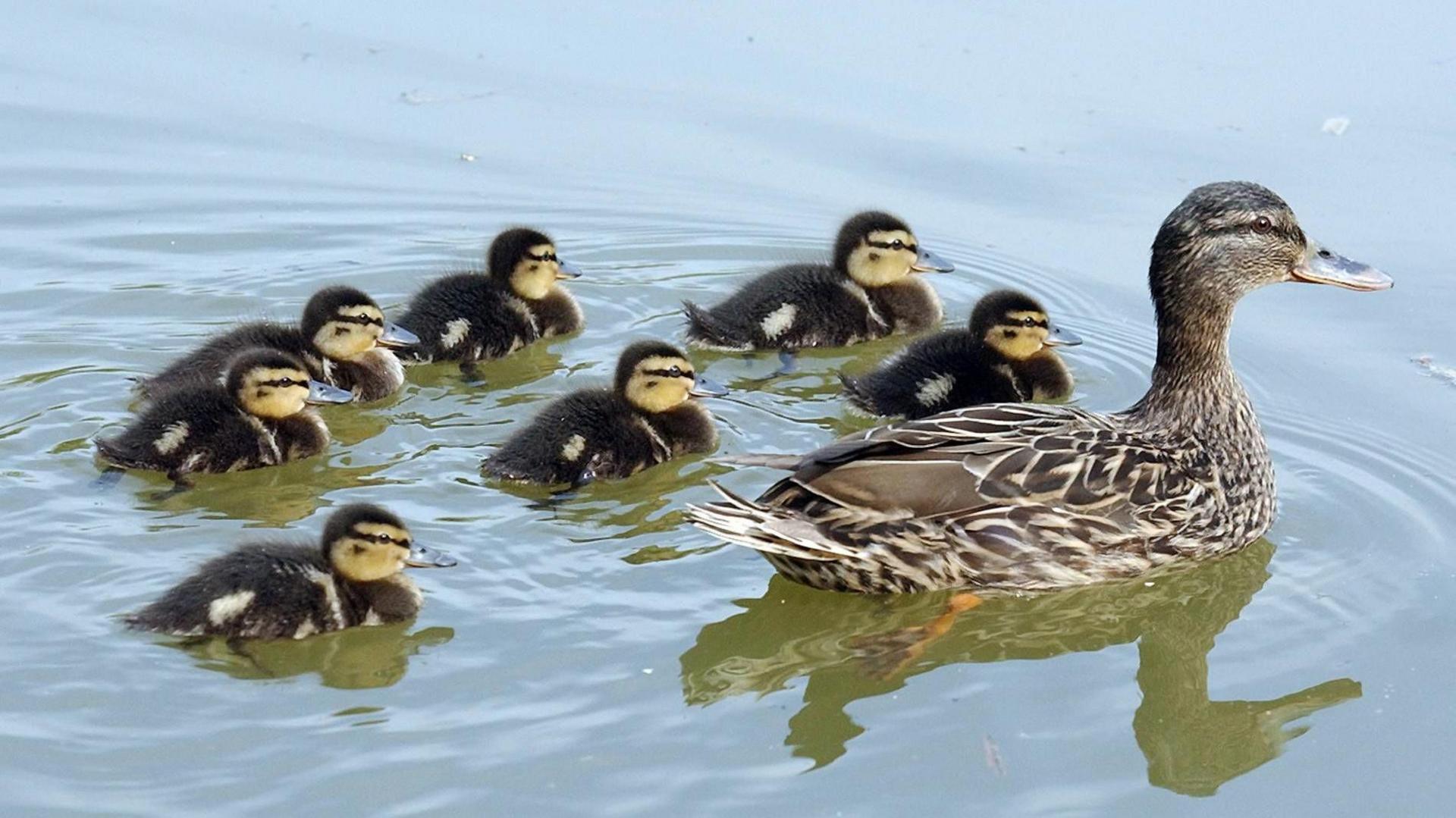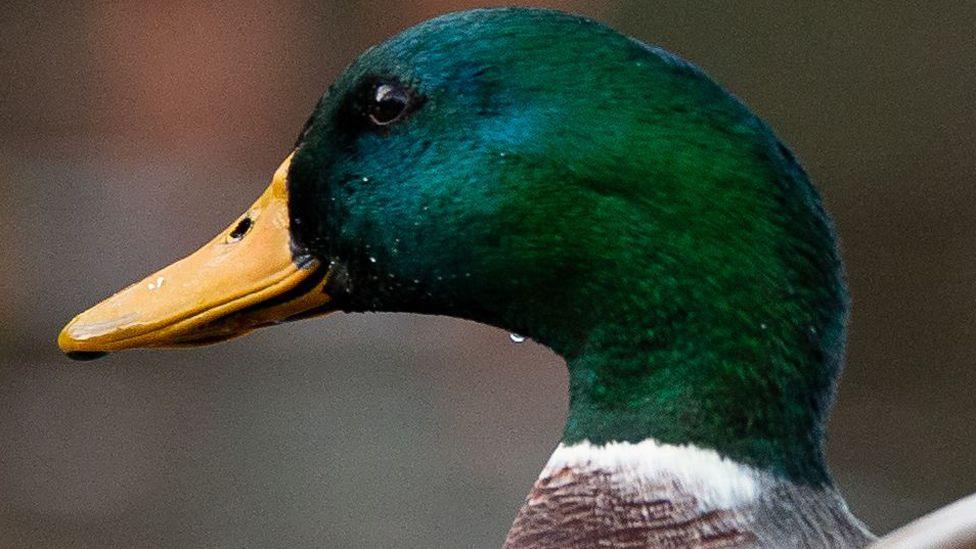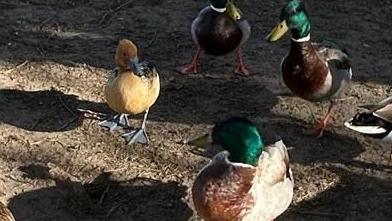Birdwatchers to help solve declining ducks mystery

PhD student Hannah Coburn is leading the study at the University of Essex
- Published
Birdwatchers have been asked to photograph ducks by researchers who are investigating the reasons for their declining numbers.
The UK's winter population of mallard or wild ducks has dropped by an estimated 36% since 1995, according to research from 2022, external.
Teams from the University of Essex have been trying to figure out what is behind the drop.
"Despite being our most common duck in the UK, mallards have been the focus of very little research here in recent decades," said PhD student Hannah Coburn.
Nature lovers have been urged to take pictures of broods in the wild, including at beauty spots, city centre ponds and wetlands.
It followed a #EssexDucks citizen science project last year, which was expanded to cover the whole of Britain in 2025.
The 2024 project saw a team use GPS tags to investigate how mallards used the landscape during breeding season.

Participants have been asked to guess the age of the ducks they spot
Ms Coburn, from the school of life sciences, hoped the public could help her build large data sets this time round.
"Investigating the rate of ducklings that survive to adulthood will give us a better understanding of what drives changes in our mallard population, as has been found elsewhere in the world," she said.
"We are particularly interested in repeated sightings of broods, so keep a look out for ducklings that you see regularly in the same spot."
Those wanting to take part, external were asked to include where and when the broods were spotted, how many ducklings there were and an approximate age.
Any information should be emailed to ducks@essex.ac.uk, the university said.
Get in touch
Do you have a story suggestion for Essex?
Follow Essex news on BBC Sounds, Facebook, external, Instagram, external and X, external.
Related topics
- Published28 July 2024

- Published17 March

- Published26 March
